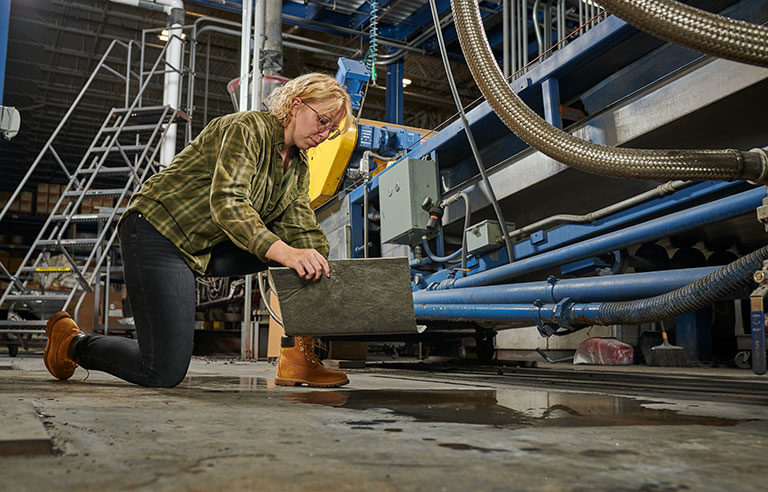Spill safety for your facility
What type of sorbent should I use at my facility?

Responding is Ryan Schmidt, regional vice president of sales, Sellars, Milwaukee.
It’s a simple fact: Despite the best precautions, drips, leaks and spills still happen. Regardless of how they occur, it’s critical to have elements in place to quickly address each messy – and potentially dangerous – scenario.
Take inventory
To adequately prepare, start by identifying each liquid or fluid at the facility – even ones used only occasionally.
During the inventory phase, be sure to denote the type of fluid: water-based, oil-based or hazardous. It’s also a good idea to walk the floor and consult with employees to ensure all fluids are accounted for. Some employers even create a schematic that indicates which areas contain which fluids.
Identify situations
Next, determine where and how drips, leaks and spills might occur.
For example, there are “expected” drips. Machines, especially older ones, are known to drip oil or leak fluids. There are “likely” leaks that can occur during regular maintenance. Finally, there are “incidental” situations. Hydraulic lines can burst or a forklift operator might pierce a drum on the loading dock or in the warehouse.
It’s also important to assess the amount of fluid that must be absorbed and the location. Are fluids stored in gallon buckets or 55-gallon drums? Are there maintenance, repair and overhaul activities that take place outdoors?
Select the form
Finally, it’s time to select the products. In general, three types of sorbents are available:
Universal sorbents – Are typically gray, and absorb both oil- and water-based fluids.
Oil only – Are usually white, absorb oil and other hydrocarbon fluids while repelling water (hydrophobic), and are designed to float on top of water.
Hazmat sorbents – Absorb all types of spills and come in bright colors, including yellow and pink, to indicate hazardous liquids.
Sorbents also come in a variety of shapes and sizes – pads, walk-on mats, rolls, split rolls, socks, booms and pillows.
A gray universal pad is best for indoors and can be used under a dripping machine.
Walk-on mats are highly absorbent and durable enough to be used in high-traffic areas to ensure floors don’t become slippery and cause slips and falls. They can also be placed under forklifts and machinery.
Rolls are a larger format that can be used under production lines to cover a larger surface area. The rolls are perforated so portions can be easily torn off.
Socks are long and easy to manipulate so they can be tucked into small areas or wrapped around the base of machinery.
Booms are typically used for marine oil spills. However, they should also be stocked at facilities that are near a retention pond, river or lake.
Finally, all-in-one spill kits are available and include the necessary elements for various spill types and sizes. The contents of a 20-gallon hazmat drum spill kit are housed in a bright-yellow polyethylene lab pack and include sorbent pads, socks, pillows and a boom, plus a pair of silver shield gloves, goggles and disposal bags.
As every plant manager knows, it’s better to be overprepared so situations can be handled calmly and efficiently with the right materials on hand.
Editor's note: This article represents the independent views of the author and should not be considered a National Safety Council endorsement.
Post a comment to this article
Safety+Health welcomes comments that promote respectful dialogue. Please stay on topic. Comments that contain personal attacks, profanity or abusive language – or those aggressively promoting products or services – will be removed. We reserve the right to determine which comments violate our comment policy. (Anonymous comments are welcome; merely skip the “name” field in the comment box. An email address is required but will not be included with your comment.)

